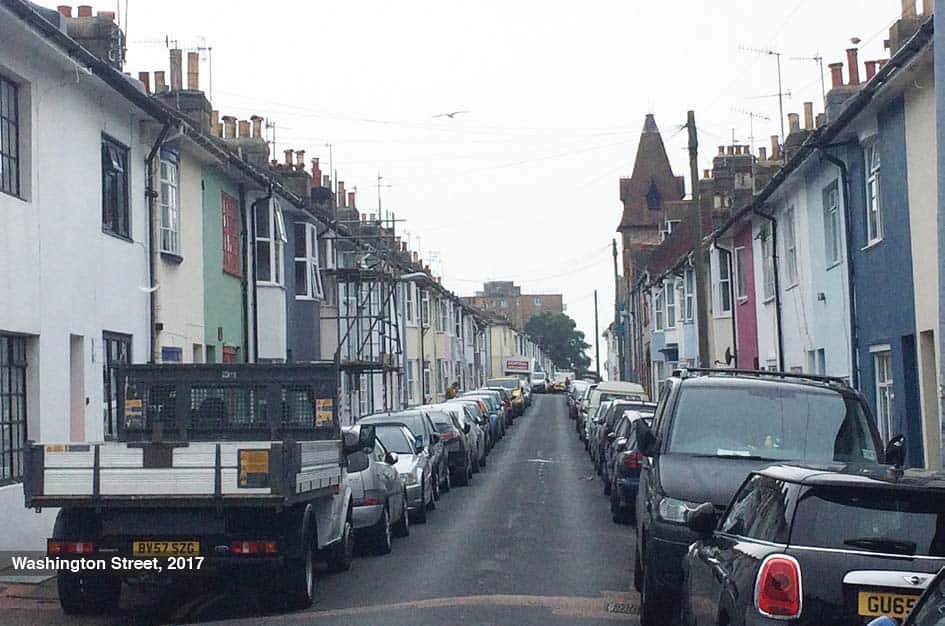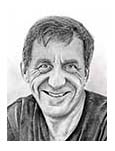By Joan Goddard
He grew up to be tall, dark and good looking, and had a very easy-going personality. He eventually became a milk roundsman, which work he did for many years until he joined J. Lyons as a fork lift truck driver in about 1955, where he stayed until he retired.
His father, also called George, had married before, and had nine children. It is difficult to know how close he was to these half-brothers and sisters, although I am sure that I remember him telling me that they used to come down and see him, and to see their father as well, presumably. As George was only 12 when his father died, it is quite likely that most of the contact he had with them ceased about then. He always told us that they wanted to adopt him, probably when his father died, but that his mother would not let him go.
He maintained that they were extremely wealthy, but that was in comparison with the standard of living he had, I expect. His mother Kate had four other children from a previous marriage, so George had a total of 13 half brothers and sisters!
He was with the Royal Signals during the 1939-45 war, and did service in Egypt, where he was at the battle of El Alamein, and in Europe after the ‘second front’ in 1944. He was wounded in the leg during fighting in Holland or Germany, and the shrapnel was never removed. It was in this leg that cancer developed, from which he died in 1976.
I have no idea where my mother and father met, probably at a dance… my mother was very good at the Charlston. My mother was older than my father by six years. She was 28 when she got married and he was 22. I think she would have got married sooner, but her mother Martha Wilson was an invalid and was mostly bedridden. She had made my mother promise that she wouldn’t leave home all the time she was alive and needed looking after.
When my grandmother Martha died in April 1931, my parents were married in the Church of the Annunciation in Washington Street on the 23rd August 1931, just as soon as they could organize everything.
They started their married life in 26 Washington Street, my mother’s brother Fred and his new wife Nellie were also living in the house. Along with them lived Bill another brother who was disabled and suffered with a hunchback. I suspect that when my mother became pregnant with me, my parents had to find somewhere else to live as it wouldn’t have been feasible to have an additional baby in the house.
Washington Street was a terraced house with a living room / kitchen in the basement, which was the norm. Some houses had a posh parlor on the ground floor, but since most people had extended families living with them the rooms on the ground floor and first floor would have been bedrooms.

Originally my parents would have cooked on a ‘Kitchener’ which was a cast iron stove with a coal fire at one end and an oven at the other, an early sort of Aga. By the turn of the century people would have had basic gas stoves, which I remember we had when I was young. The kitchen would have had one cold tap, with no hot water and an outside toilet. At night you used a pot under the bed, which was emptied into a ‘slops’ bucket in the morning. There were very few houses in Brighton with a bath; it was customary on a Friday night to go to the local public baths.
My mother had been working in a lady’s dress shop called Mary Yorks in Western Road, where she was the book keeper and ran the office, but left when I was born. In those days ladies didn’t work once they had children. My father was working for the Coop dairy as a milkman. It must have been hard for them when she had to give up work and just live on my father’s earnings.
The weekly routine would see my father making his own breakfast and probably getting my mother a cup of tea before he left the house early as he was working for the dairy. My mother’s routine would have been very tedious. Monday was washday, which took the whole day, so we eat the remains of Sunday’s roast, as there was no time to cook. In between feeding me (and later Brenda) she washed nappies by hand, most likely ironed on Tuesday, cleaned upstairs thoroughly on Wednesdays and downstairs on Thursdays. She would have had to go shopping almost every day for perishable foods because there was no fridge or freezer to keep anything fresh.
Most houses had a ‘copper’ (as we did in Princes Road), a concrete edifice in the corner of the scullery, containing a copper lining which you filled with water from the one tap and lit a coal fire underneath it to heat the water, it emptied by a tap at the bottom. This was used to boil up all the clothes (which were suitable for boiling) to clean them. It could also be used to heat enough water so that those who chose to have a bath at home rather than at the Public Baths could fill the tin (galvanized) bath which would otherwise hang on the wall in the garden.
My parents moved around quite a bit, moving from Washington Street to Redvers Road. Later they moved to St Paul’s Street, which at the time was quite rough area. We were only there for two weeks before my mother said she wasn’t going to live there any longer! Then we moved to Roundhill Crescent, which was a big house and even had a bathroom! We shared the house with my father’s half brother Len and his wife Bess, (who was a wee little Scots woman who wouldn’t say boo to a goose), along with their three daughters. Brenda and I were roughly the same age as these three cousins so we got on well. The house at Roundhill Crescent was only about four houses away from where Bill, my future husband was living, although I didn’t know it at the time.

When Bill and I moved to Kenya, Brenda saw the cousins occasionally, but some time after we returned to the UK Brenda and I were able to have regular tea parties with all three cousins and Aunty Bess. She was living in a nursing home where she eventually died. After this two of the cousins moved to Seaford where Betty, the eldest already lived, and so our regular get togethers became less frequent .

Finally we moved to 16 Princess Road, a few roads away.
Rose died from a stroke in 1956 at the age of 53, her ashes were scattered on her mother’s grave. In February 1959 Jim married Celia Palmere.

Continue reading: Joan Goddard













You must be logged in to post a comment.